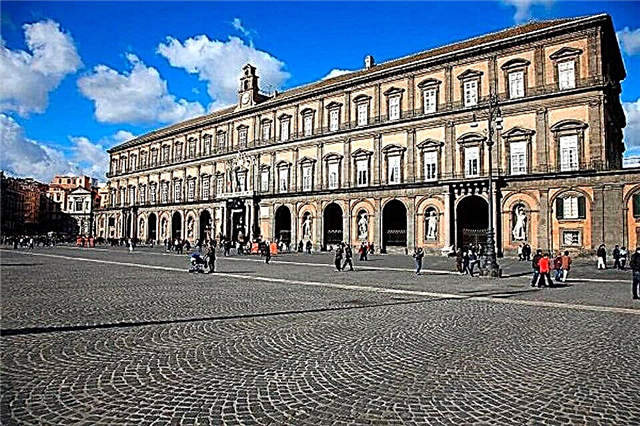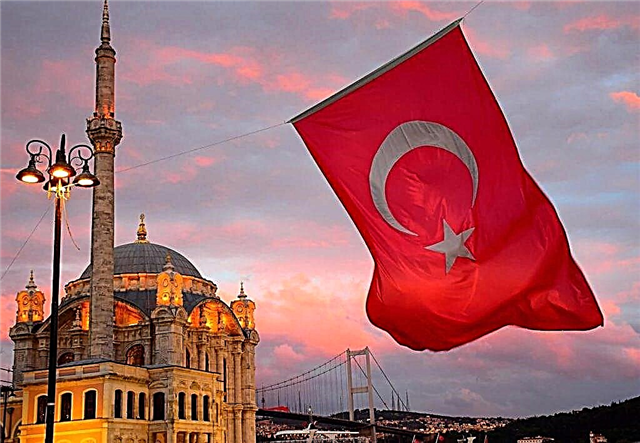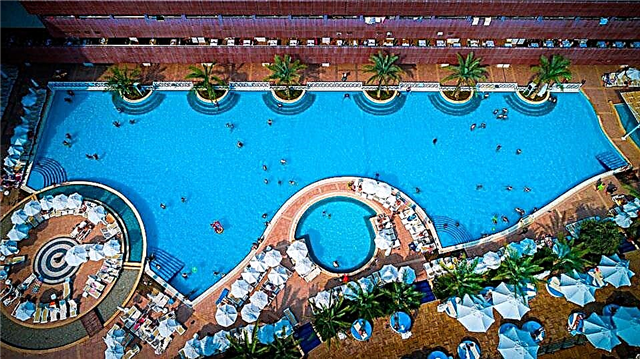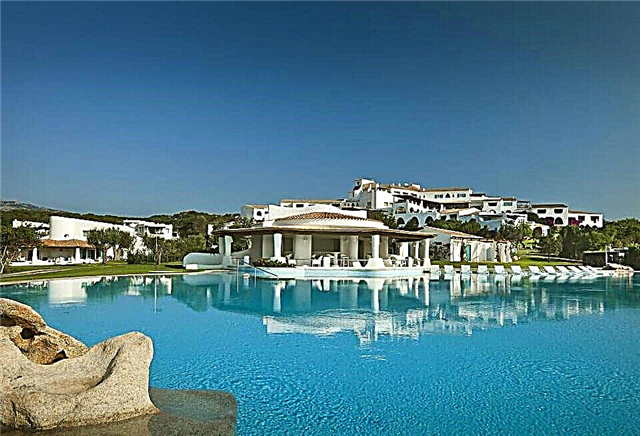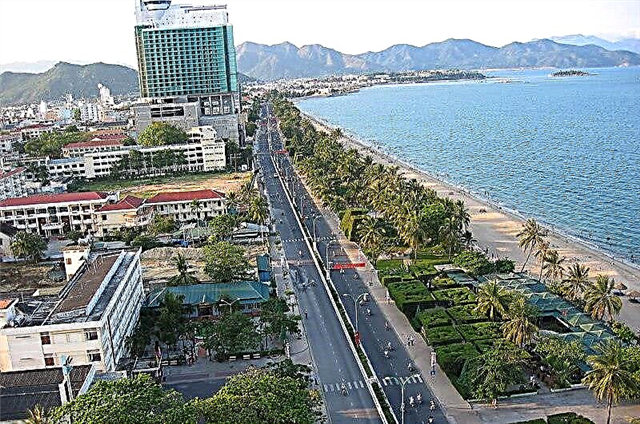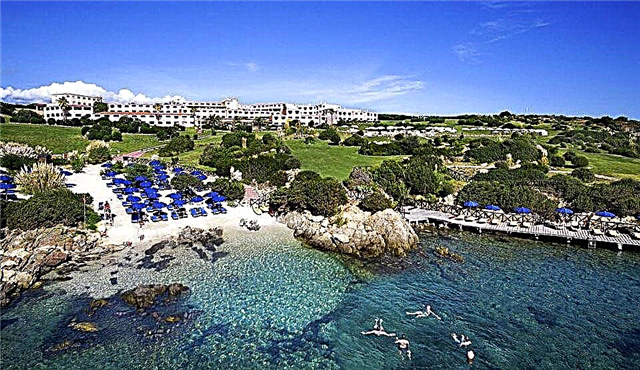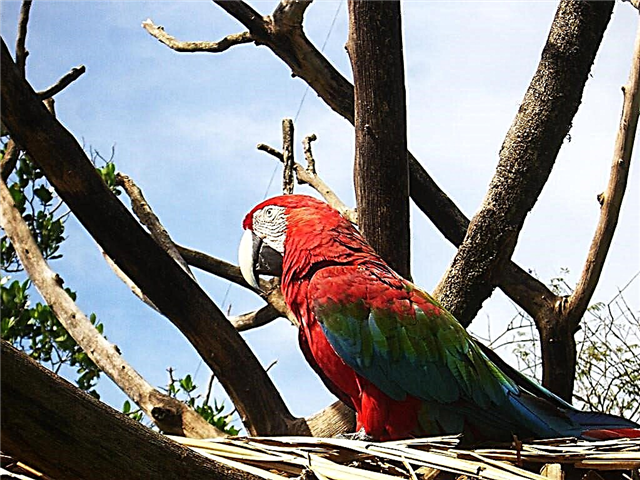Venezuela imagines a picture of a lost world, permeated with historical wonders and paradise landscapes, with which you want to merge forever. The Canaima Nature Reserve is that unique formation, every particle of which suggests that a person has fallen into another reality. Pristine nature, lush green forests, blue water - these beauties make you forget about everything.
Read how and where to buy cheap flights in our life hack.

Where is the park
The park is located in South America, next to Brazil and Guyana. Its surroundings are spread over a vast territory of 30,000 km. Canaima is the oldest reserve, the year of discovery is considered 1962. Thanks to the unique flat-topped mountains, called Tepui, it is included in the UNESCO World Heritage List. The purpose of the park is to protect the mountainous surroundings next to the largest waterfalls.

The remoteness of the site from civilization makes it very difficult to get to the park by traditional routes. There are few roads connecting with settlements, so small aircraft are the most relevant. Walking and canoeing is very popular.
Sights
The visiting card of the place is undoubtedly Tepui. They are unique natural formations. Their second name is "mesas". Indeed, when you look at these outlines, it seems that someone's gigantic omnipotent hand has placed fancy tables on the surface of the earth.

If you turn to history, you can get quite definite information about the origin. Tepui formed during a period when South America and Africa were part of the same supercontinent. The mountains have an interesting relief: sharp and steep slopes, peaks that look like truncated pyramids. There is no such thing anywhere else in the world. There are about a hundred of them in total, and each of them more than once became the object of conquest by climbers and gave such "daredevils" a fabulous bird's-eye view.

The locals of Pemona worship these formations, it is no coincidence that the literal translation of the word Tepui means "house of the gods." The "Table Mountains" are of a sandy nature. The highest are Roraima and Auyantepui. The expedition of the scientist Robert Schomburgk to the top of Mount Roraima inspired Conan Doyle to create the legendary Lost World. More information about Mount Roraima can be found in our article.

The approach to Roraima is clearly felt from many kilometers away; a huge cloud flaunts above its giant "tabletop", because because of its height, the mountain becomes the center of concentration of moist air masses. This is also the cause of regular, powerful thunderstorms.
[tp_search_shortcodes id = 4 origin = ”MOW” destination = ”CCS” type = ”avia” subid = ”nacionalnyjparkkanajmavvenesuele”]
Angel Falls
Another gem of the reserve is Angel Falls. It is also known from school geography textbooks as the tallest waterfall in the world. Its height is 1054 m. It is even difficult to imagine how much it is. Before touching the ground, the drops in a powerful stream scatter into the smallest particles and form a fog.

Interestingly, the waterfall got its name in honor of James Angel, an American pilot. According to historical data, during the landing on Auyantepui, his plane was damaged and the whole team had to go down the mountain on their own, and the journey to the nearest settlement took 11 days. The fame of the traveler's courage and valor spread everywhere and it was decided to give the waterfall his name.

The deep rivers Churun, Karrao, Karoni and Yuruani attract with their cool lagoons of stunning beauty. They draw the weary traveler into their arms. They contain a huge freshwater reserve of the planet. The water of the Karoni River has an interesting feature - a dark color, which is associated with an increased concentration of humic acids, which end up in the river with humus from the coastal land. This river is also called "black water", along with the Brazilian Rio Negro.
Nature
Canaima Nature Reserve is characterized by the South American nature of the transition zone from plain to mountainous terrain. The foundations of the mountains have become the birthplace of savannas, and evergreen forests can be found on the slopes. The flora is characterized by an exceptional variety.
The park is a real repository of endemic plants. More than three hundred of their species have been found here. But the most common are orchids, because here, by nature itself, excellent conditions have been created: a high level of temperature and humidity. There are moss and lichen growths. There are also rare Roraim sundews belonging to insectivorous plants.

The fauna of the surrounding area of the park also has many species, however, these are completely traditional animals for the foothills of Venezuela: agouti, chameleons, tapir, jaguar, bakers, cougar and, of course, fearsome, wide-mouthed caimans.
For a long time of its residence, the caiman practically abandoned its hunting inclinations and basically does not hunt in the wild, but lives in ponds where peasants water their cattle. These animals become his prey. Fans of birds will be able to meet here such favorites as owls, parrots, hummingbirds.

Pemon
The territory is the historical homeland of the Pemon Indian people, for which local attractions are considered cult - endowed with special strength and energy. Aborigines are something like an integral symbol of the area, an element of national color. Therefore, they are employed in the tourism industry as guides to the beauty of the park, as they are well-versed in the area. It has already become a tradition for the guests of the park to take several photos with representatives of the tribe and listen to their fascinating stories and legends.

The inscriptions found on the territory indicate that this nationality settled in the vicinity of the reserve more than ten thousand years ago. Pemons prefer to live in the flat area of Canaima. They are traditionally engaged in gathering, hunting, and have small vegetable gardens where they grow fruits and vegetables for food.
The tribe exists, as it were, separately from civilization; children do not attend school, electricity is not available. Aboriginal people do not use medical services, preferring to treat themselves on their own with folk remedies and methods. Some residents earn additional income by building folk-style huts. Visitors are ready to pay money for this.
How to get there
There is only one road for the entire reserve - from the city of Ciudad Bolivar. She is the only one with a crushed stone surface. There are no other roads. Most tourists get there on their own, although this takes a fairly long period of time and can be dangerous for untrained travelers.

Therefore, most of the guests arrive in Canaima by light aircraft from Caracas, or by canoe from the Orinoco Delta. Here the road will not take long and will be exciting and memorable. There are no large cities around the park, which, in principle, is favorable for this area, because there is no pollution, nature retains its untouched appearance.
Several hotels are ready to accommodate travelers on the territory of the reserve. The most luxurious of them are Parakaupa Camp Lodge and Arekuna Camp Lodge. They look like small palm houses that fit wonderfully into the surrounding landscape. Guests can not only relax in them, but also visit numerous restaurants, bars, cafes, where they will be delighted with a friendly atmosphere, friendly staff and delicious food.
Canaima National Park reveals to the traveler all the treasures, all the wealth of its flora and fauna. Due to the inaccessibility, all this has been preserved almost in its original form. The reserve staff make sure that guests follow the rules of conduct and protect nature. Only then all the beauties will remain intact and they can be admired for many years to come.
This area is definitely worth a visit, despite the difficult path. After all, only after sailing along the river in a canoe, driving thousands of kilometers in a jeep on the savannah, passing through dense wild jungle and, of course, climbing Tepui, one can appreciate and understand the mighty power of this place, the beauty of its exoticism, and touch this lost civilization. A visit to the park will be remembered by every tourist with pleasant moments and will again beckon with its wonders.
Don't miss a few more places of interest: Flinders Chase National Park, Port Campbell Park, Haleakala Park.


